Phanteks Enthoo Primo Case Review
by Dustin Sklavos on August 10, 2013 12:00 PM EST- Posted in
- Cases/Cooling/PSUs
- Water Cooling
- Phanteks
Phanteks gives the Enthoo Primo a unique advantage by allowing the motherboard's 4-pin PWM fan control to split off and control all the 3-pin fans in the enclosure (provided the motherboard itself can supply enough power to all of those fans); if you've been reading me for a while you know I'm a big advocate of fan control, and I'm very fond of this particular solution. It's a simple and fine-grained alternative.
The Enthoo Primo was tested at an ambient temperature of about 23C. The bay area has been unusually cool for these summer months, so I'm fairly certain we're going to have a punishingly hot Indian Summer soon.
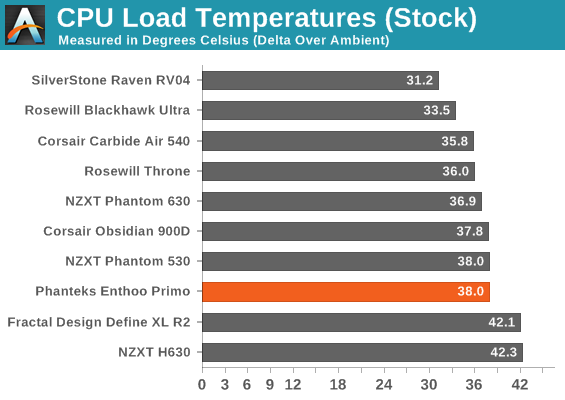
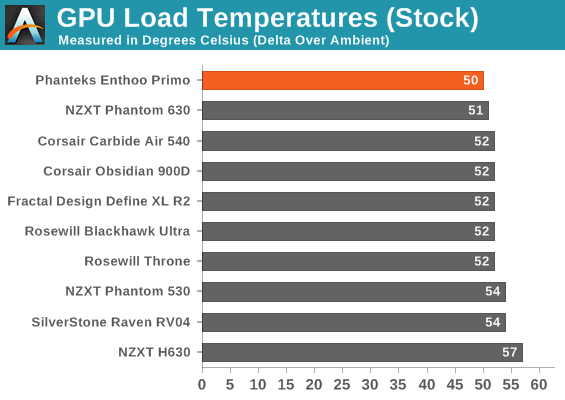
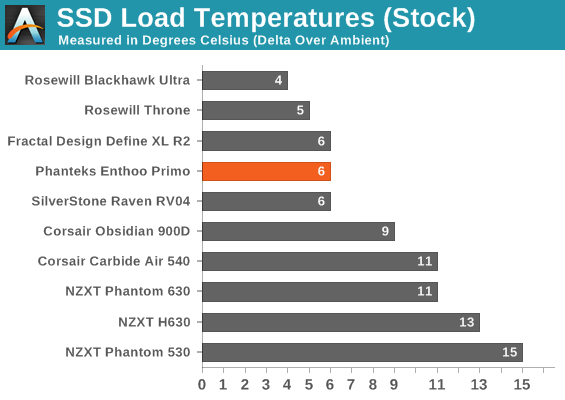
The unique cooling design of the Enthoo Primo benefits from the bottom intake fan, but it's difficult for air from that intake, or from the front intakes, to make the journey to the CPU heatsink. You'll see this is a recurring theme with the Enthoo Primo; CPU cooling performance has been sacrificed for better GPU thermals.
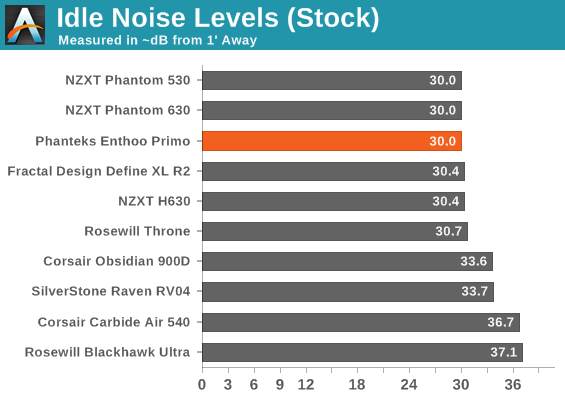
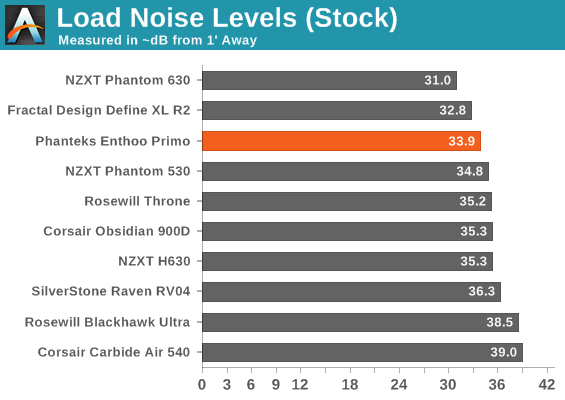
Noise levels are outstanding for a case that has no acoustic padding. The split-PWM fan control definitely gets the job done.
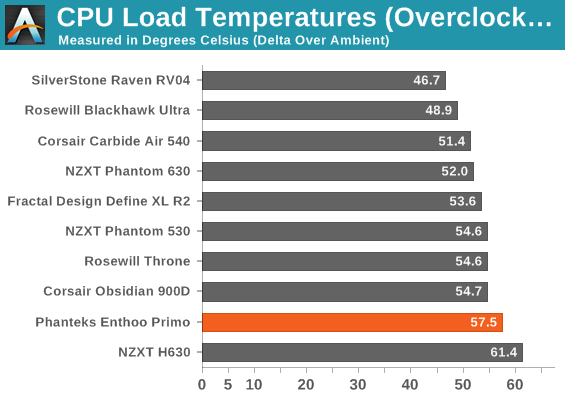
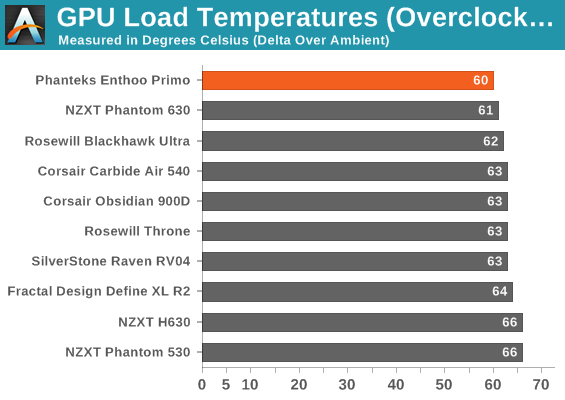
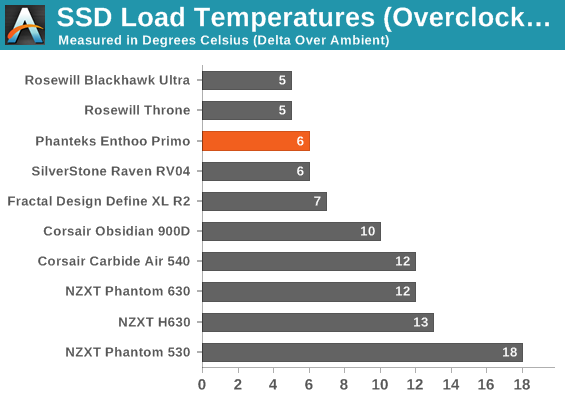
Overclock the components, though, and the tradeoff becomes more pronounced. You get great GPU thermal performance, but the CPU suffers. This is a case that would probably benefit tremendously from a 280mm closed loop cooler mounted to the top as an intake. That in mind, I'm disinclined to ding Phanteks too much for their performance here.

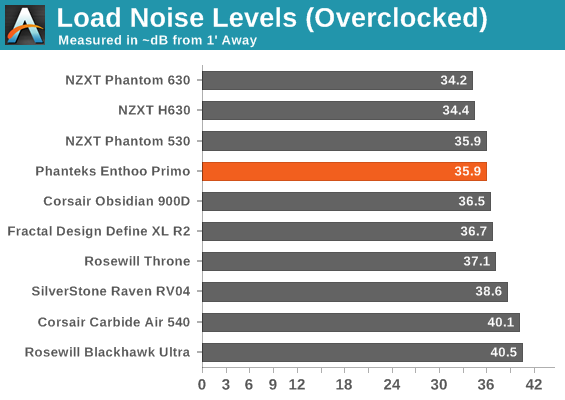
Once again the Phanteks Enthoo Primo posts exemplary acoustic performance. Incredibly quiet at idle, reasonably quiet under load.

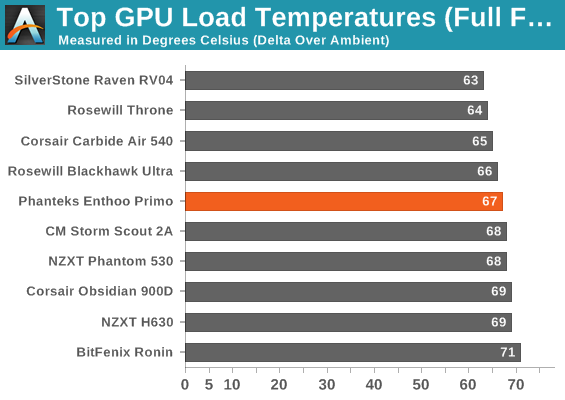
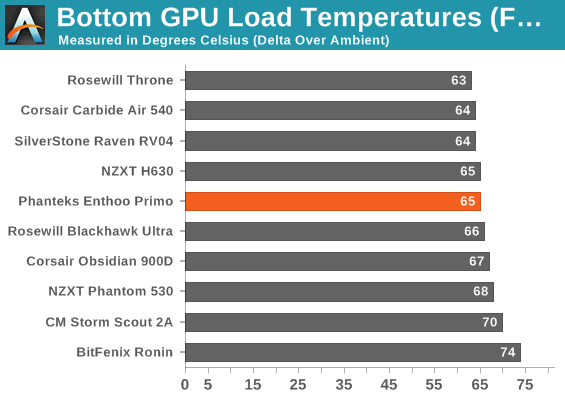
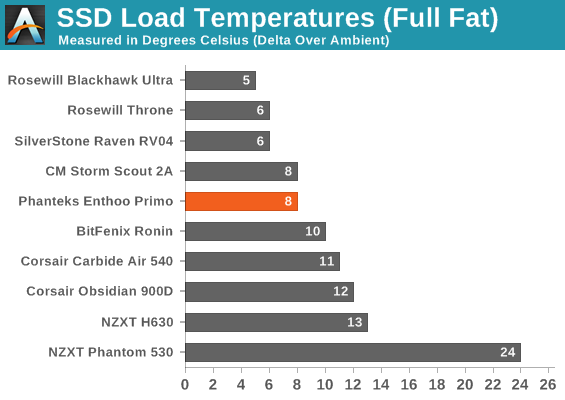
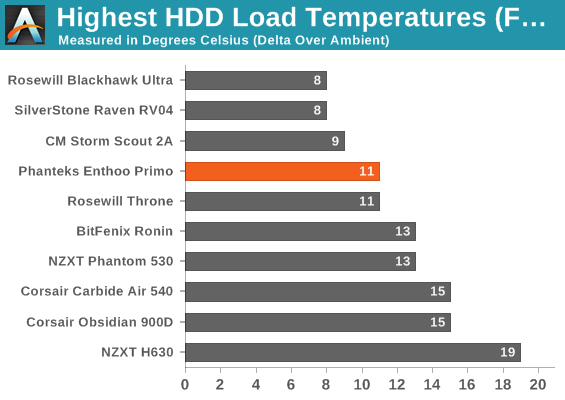
Full fat thermal testing continues to be unkind to the CPU, while the rest of the case's performance is still fairly competitive. The bottom GPU is going to get the lion's share of the cooling performance owing to the bottom intake.
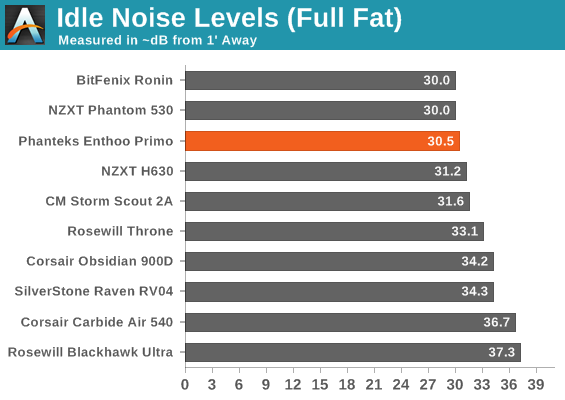
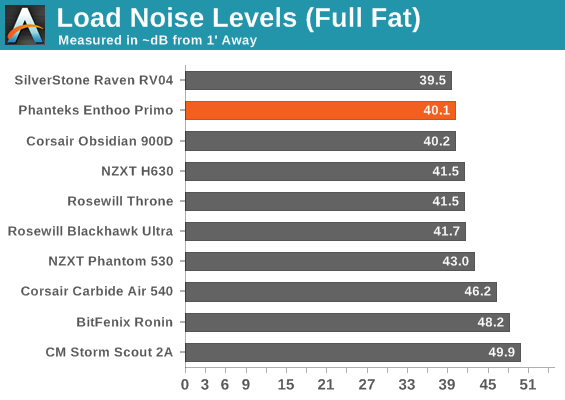
Again, though, check out those noise levels. The Enthoo Primo is among the quietest cases we've tested when built to bear with the full fat testbed.










42 Comments
View All Comments
f0d - Sunday, August 11, 2013 - link
pre order placedAbot13 - Tuesday, August 13, 2013 - link
meh, just go to caselabs, resistance there is futile for sure, untill you realise that that kind of beauty costs.... still cheaper then a girlfriend though ;) (and depreciates less quickly too)Barbarossa - Wednesday, August 14, 2013 - link
Haha, Obsidian 1080D.JamesWoods - Saturday, August 10, 2013 - link
Frankly, this case is not at all worth the cost when you can get a case to house your PC and do just fine for $40. Fools and their money are soon parted.zero2dash - Saturday, August 10, 2013 - link
Having owned several high dollar cases (including a LL PC-V1000BW Plus II and a SS FT02), it's all in what you prioritize.That being said - at this point, I'd rather stick with <$100 cases (ideally <$75) and spend the extra money on more RAM, a better GPU, or a bigger SSD, which is precisely what I've been doing the last few years.
noeldillabough - Sunday, August 11, 2013 - link
Buying an expensive case will last you a long time, compare that to say your sli videocards that are crap in a couple of years. The worst possible investment is computer hardware; doesn't stop me from wanting the latest!Ilias78 - Sunday, August 11, 2013 - link
40$ with horrible cable management, acoustics, airflow and ergonomics.Sure bro, whatever you say.
JamesWoods - Wednesday, August 14, 2013 - link
llias78 - Horrible? Apparently you haven't been shopping in awhile. There are $40 cases now that have fantastic cable management. Maybe you just suck at building PCs. Cable management isn't some big mystery. Personally, I prefer to spend the extra cash on quiet fans and still have some extra left over from what I save.noeldillabough - You don't sell your entire system...I find it's much better to do so. Remember the switch up from USB 2.0 to USB 3.0? It's easiest to just sell the entire system and build a new one than have to buy USB 3.0 PCI cards, or USB 3.0 connection boxes for your bay drives.
waldojim42 - Wednesday, August 14, 2013 - link
While cheap cases do work, and I still own some that are 10+ years old, I actually don't like working with them the way I do my more expensive cases. The Antec 1200 for example, has enough room that I can move things wherever I need them. So when I am running 4 video cards, I can move all my hard drives to the top of the case, and open up the air flow down below them. Something a $40 case simply won't allow.Also worth consideration, is the filtering. I live in a dusty environment (Texas), and am constantly cleaning my filters. Better filters than dead/overheating components in the case!
rpg1966 - Saturday, August 10, 2013 - link
Surely you can plot the temperature and noise levels on a single chart (temp on X, noise on Y, for example), to make the numbers understandable at a glance?